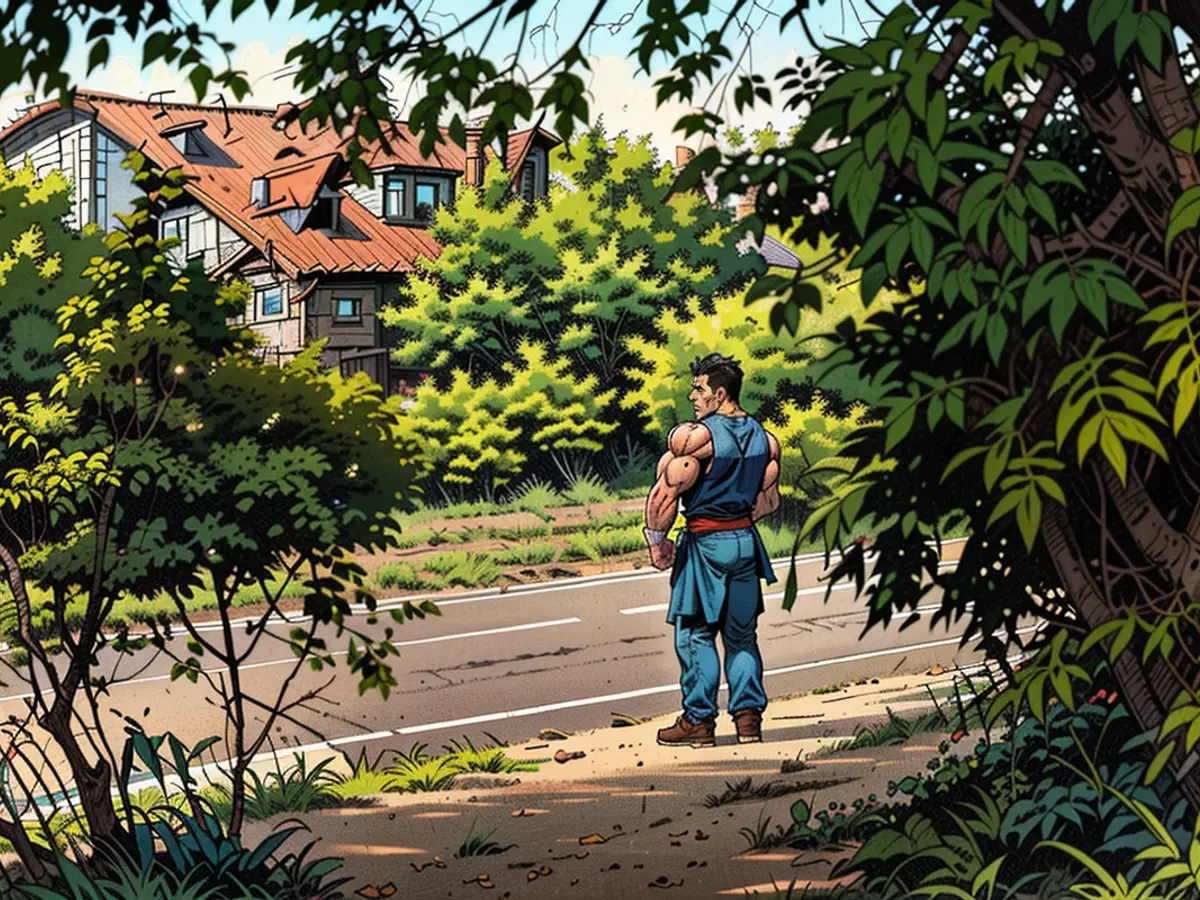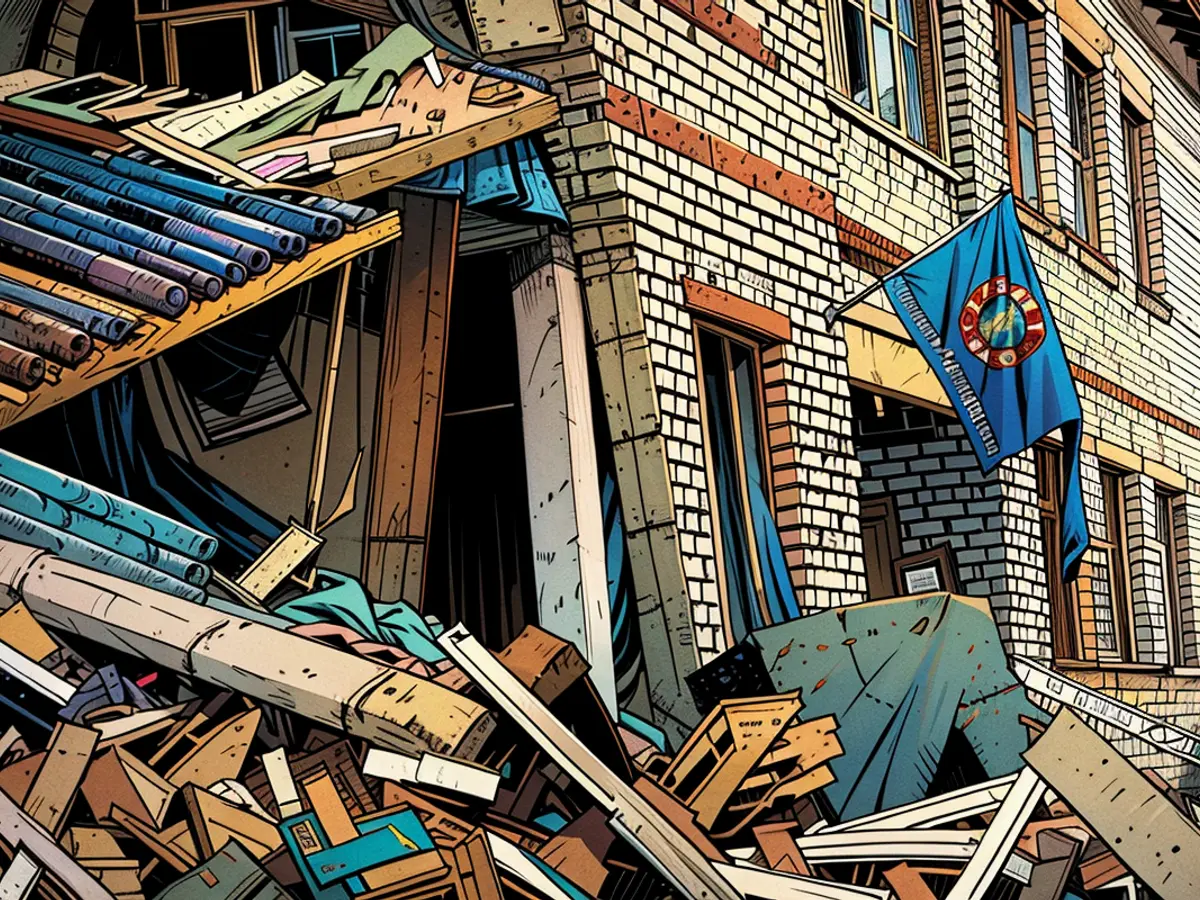Russia initiates expulsion endeavors against Ukraine in Kursk, nonetheless, the counter-strike's momentum hasn't gathered pace yet.
Ukraine initiated its offensive last month, capturing numerous settlements, a surprise even to its allies in Kyiv. However, experts predicted from the get-go that maintaining these gains would be challenging.
Footage from the area shows Russian troops recapturing a couple of villages, but the situation remains uncertain. The exact strength and deployment of Russian forces in the region remain unclear, and trustworthy frontline reports are scarcely available.
Ukrainian President Volodymyr Zelensky acknowledged the commencement of Russia's counter-offensive and mentioned plans to send around 60,000 – 70,000 troops to the Kursk region. He declared on Friday that the Russians have not yet achieved significant success. "Our brave soldiers are holding strong," he stated.
The US estimates that Russia would require around 20 brigades, or about 50,000 men, to displace Ukrainian forces from Kursk. However, Major Gen. Pat Ryder stated that Russian activities thus far have been "marginal," and analysts have not observed the necessary mass or quality to swiftly dislodge the smaller Ukrainian force.
Particular elite units do seem to be participating in the Russian counter-offensive, as shown in geolocated video, which depicted elements of the renowned 51st Airborne Regiment joining an assault on Thursday. Nevertheless, the Institute for the Study of War (ISW) concludes that the Russian force in Kursk consists primarily of inexperienced combat units.
Initial indications suggest that Russian forces may attempt to encircle Ukrainian troops near the town of Korenevo before launching a larger-scale counteroffensive operation.
A Ukrainian officer participating in the Kursk operation informed CNN on Friday that Russian troops had taken around 2 kilometers on the western side of the zone occupied by the Ukrainians last month. However, he noted that poor communication was hampering their operations.
Video surfaced of the Russian flag, along with the flag of the Wagner private military company, being raised in the village of Snahost. The officer stated that the situation had stabilized, and there was intense fighting in another nearby village.
There are also indications that Ukrainian units may be planning a new attack route into a different part of Kursk, near the town of Veseloe. This could potentially be intended to divert Russian attention.
As Robert Rose, of the Modern War Institute at West Point, explains, "By launching surprise offensives across the poorly defended border, Ukraine can practice operational-level guerrilla warfare to support a broader strategy of exhaustion."
Despite the growing Russian counterattack in Kursk and the mounting Ukrainian casualties, Zelensky maintains that the incursion into Kursk is essential and beneficial, having slowed Russian advances in eastern Donetsk, where the city of Pokrovsk is under imminent threat. President Putin seeks to fully capture four eastern Ukrainian regions that he already partially controls, with most of the fighting in the war focusing on this area.
Zelensky informed a Kyiv panel moderated by CNN's Fareed Zakaria on Friday that Russia's advantage in artillery ammunition in the Pokrovsk area had been reduced from 12-to-1 to 2.5-to-1, which he attributed to the success of the Kursk campaign.
"The speed of the Russian advance in the Donetsk sector was even faster before the Kursk operation. Not only in Donetsk, but throughout the entire east," Zelensky stated.
While Russian momentum slowed in the first week of September, no significant units were withdrawn to participate in Kursk, though some were repositioned from less contested regions along the 1,000-kilometer front line. The Kremlin appears to prioritize gaining ground in Donetsk over recovering lost Russian territory – for now.
The Ukrainians have offered several reasons for the Kursk operation – to force Russia to redeploy troops on the frontlines in Ukraine; to provide Ukraine with territorial leverage in any negotiations; to ridicule Putin's 'red lines'; and to acquire a pool of prisoners-of-war for exchange (which they have already accomplished).
Zelensky claimed that the Kursk operation had demonstrated Putin's warnings about the consequences of escalation to be empty.

Zelensky has now added another justification for the Kursk offensive: to thwart a Russian plan to establish a vast swathe of northern Ukraine as a buffer zone, which would have enveloped "regional centers."
He informed the Kyiv panel that "information from our partners" suggested that the Russians intended to create "security zones" deep within Ukrainian territory.
The ISW, a think-tank in Washington DC, observed on Friday that the Russian military command may have intended "additional offensive operations along a broader and more continuous front in northeastern Ukraine to significantly stretch Ukrainian forces."
For now, such Russian aspirations remain on hold. They still hold the advantage in firepower and manpower along most of the existing frontlines and will continue to utilize intense bombardment followed by infantry advances through the rubble of destroyed targets as a means to wear down the enemy.
The Ukrainians have several immediate priorities: establishing and fortifying defensive lines in the east and accelerating the formation of new units. They are developing longer-range strike capabilities to degrade Russian infrastructure such as airfields and fuel depots. And they are seeking greater authorization to employ precision western missiles in deep strikes within Russian territory.
Zelensky informed Fareed Zakaria on Friday that Russia's guided aerial bombs, known as FABs, were responsible for 80% of destroyed infrastructure – and Ukraine urgently needed to strike the airfields from which they are launched.
This situation appears to be gaining popularity. During his meeting with American President Joe Biden on Friday, UK Prime Minister Keir Starmer stated that "the next few weeks and months could be pivotal – it's absolutely essential that we aid Ukraine in this significant war of liberty."
However, the Biden Administration is cautious about the potential repercussions of what Russia perceives as an escalation, which could draw NATO into the conflict directly.
According to Rose at the Modern War Institute, the Kursk incursion could incentivize Ukraine to innovate a new tactic that could significantly shift Ukraine's strategy in combat.
"Ukraine can't achieve a decisive victory over Russia through maneuvers. What it can do is use maneuvers to exploit weaknesses, stretch Russia too thin, create disorder, encircle Russian troops, and capture Russian weapons."
According to Matthew Schmidt, Associate Professor of National Security at the University of New Haven, the key question is how Ukraine impacts Putin's decision-making, whether in Kursk or through more extensive attacks within Russia, or both.
"Does it prompt him to negotiate? Does it lead him to withdraw or pause in Donetsk?"
The Kursk incident may have persuaded Biden and other Western allies to approve more extensive attacks, Schmidt suggests - and "If subsequent attacks can sustain the conflict deep within Russia, affecting the Russians and then influencing the Kremlin's decision-making."
That would constitute a success. But we must consider the broader question, as the US eventually did in Iraq, says Schmidt. "How does this conclude?"
Ukraine's operations in Kursk could potentially weaken Russia's position in Europe, as President Zelensky mentioned the possibility of creating a buffer zone to prevent the establishment of a vast swathe of northern Ukraine as Russian territory.
Despite Russia's counterattack in Kursk, the US and its allies continue to support Ukraine, viewing the current situation as crucial in the wider context of maintaining peace and stability in the world, not just in Europe.








